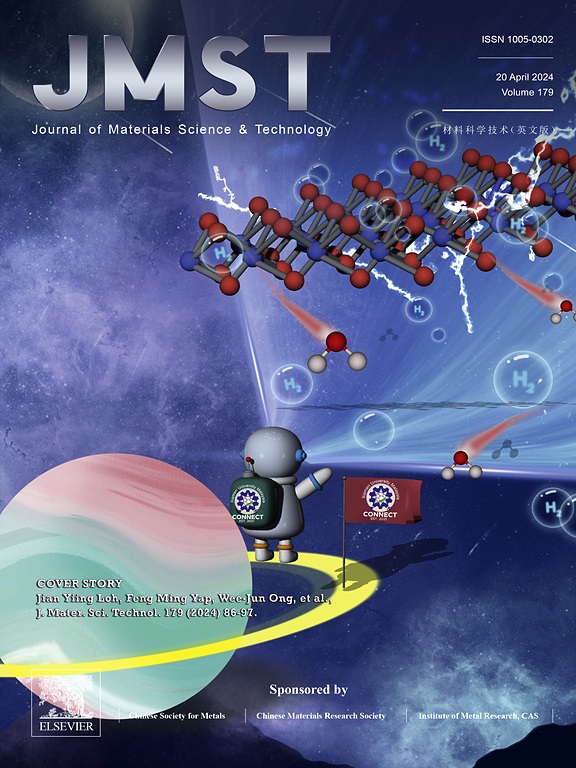通过溶质再分配和晶粒细化,打破镁合金热导率和机械性能之间的权衡
IF 14.3
1区 材料科学
Q1 MATERIALS SCIENCE, MULTIDISCIPLINARY
引用次数: 0
摘要
开发具有高导热性和机械性能的镁(Mg)合金对于先进的热管理应用至关重要,特别是在大功率5G基站中。然而,传统的镁合金本质上受到这些特性之间权衡的限制。在本研究中,系统地研究了热机械加工,特别是挤压温度和挤压比对Mg-3Zn-0.2Cu-0.2Ca-0.4Zr (wt%)合金显微组织、导热系数和力学性能的影响。表征技术包括OM、SEM、EBSD、TEM和准原位EBSD,以揭示潜在的机制。在285℃下,挤压比为8:1,拉伸强度为344 MPa,导热系数为139 W/(K m),这是通过MgZn2动态析出降低基体溶质含量实现的。热导率主要受溶质再分配和沉淀行为控制。此外,溶质再分配后第二相的增加和细化以及通过调节挤压参数实现的晶粒尺寸的细化将导致力学性能的显著提高。这些发现为通过热机械加工进行镁合金微结构工程提供了机理基础,使设计具有增强导热性和机械性能的轻质材料成为可能。本文章由计算机程序翻译,如有差异,请以英文原文为准。

Breaking the trade-off between thermal conductivity and mechanical properties in magnesium alloys via solute redistribution and grain refinement
The development of magnesium (Mg) alloys with both high thermal conductivity and mechanical properties is critical for advanced thermal management applications, particularly in high-power 5G base stations. However, conventional Mg alloys are inherently limited by a trade-off between these properties. In this study, the influence of thermomechanical processing, specifically extrusion temperature and ratio, on the microstructure, thermal conductivity, and mechanical performance of a Mg-3Zn-0.2Cu-0.2Ca-0.4Zr (wt%) alloy was systematically investigated. Characterization techniques, including OM, SEM, EBSD, TEM, and quasi-in situ EBSD, were employed to reveal the underlying mechanisms. Optimal property synergy was achieved at 285°C with an extrusion ratio of 8:1, yielding a tensile strength of 344 MPa and thermal conductivity of 139 W/(K m), which is through MgZn2 dynamic precipitation that reduces matrix solute content. Thermal conductivity was found to be primarily controlled by solute redistribution and precipitation behavior. Also, the increase and refinement of the second phase after solute redistribution and the refinement of the grain size achieved by regulating the extrusion parameters will lead to a significant enhancement of the mechanical properties. These findings provide a mechanistic basis for microstructural engineering of Mg alloys via thermomechanical processing, enabling the design of lightweight materials with enhanced thermal conductivity and mechanical properties.
求助全文
通过发布文献求助,成功后即可免费获取论文全文。
去求助
来源期刊

Journal of Materials Science & Technology
工程技术-材料科学:综合
CiteScore
20.00
自引率
11.00%
发文量
995
审稿时长
13 days
期刊介绍:
Journal of Materials Science & Technology strives to promote global collaboration in the field of materials science and technology. It primarily publishes original research papers, invited review articles, letters, research notes, and summaries of scientific achievements. The journal covers a wide range of materials science and technology topics, including metallic materials, inorganic nonmetallic materials, and composite materials.
 求助内容:
求助内容: 应助结果提醒方式:
应助结果提醒方式:


